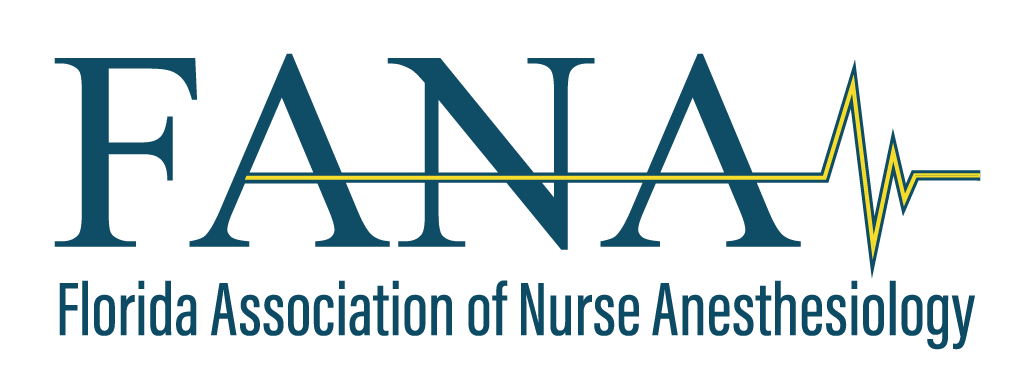FANA Position Statement on the Opioid Crisis
Background
While many patients may benefit from opioid analgesics for pain management, an alarming
increase in opioid overprescribing, opioid use disorder, opioid diversion, and opioid
morbidity/mortality has created an ongoing healthcare crisis in the United States. The statistics
are staggering. Per the President’s Commission on Combating Drug Addiction and the Opioid
Crisis, it has been estimated that nearly 100 percent of surgical patients are prescribed opioid
drugs to manage their postoperative pain, and 80 percent of new heroin users start out by
misusing pain medications 1. The impact of pain and its treatment is taking a terrible toll on the
nation’s productivity and economy, and is straining the U.S. healthcare system to the breaking
point.
Certified Registered Nurse Anesthetists (CRNAs) are uniquely qualified to provide holistic,
patient-centered, opioid-sparing, multimodal pain management across the continuum of pain
and in all clinical settings and are positioned to offer patients greater transparency,
understanding and engagement in their own care—key considerations for preventing opioid
dependence.
Position
It is the position of the Florida Association of Nurse Anesthetists (FANA) that the opioid crisis is
the most significant healthcare emergency currently facing the state of Florida. We believe that
the eradication of the opioid crisis should be the highest priority for all Florida healthcare
providers. In the absence of chronic cancer related pain, opioids should be the last possible
solution to manage pain. It is our opinion that the most effective strategy for immediately
reducing and eventually eradicating the opioid crisis is to rapidly transition to an evidencebased
multimodal, patient-centered treatment approach.
Recommendations
To support this position, the FANA offers the following recommendations:
• Careful assessment and treatment of acute pain during surgery or other procedures,
which may include appropriate opioid prescribing, may decrease the risk of acute pain
transitioning to chronic pain or the probability of the development of opioid
dependency and abuse. The treatment of acute pain through opioid sparing techniques
such as regional anesthesia, peripheral nerve blocks, non-pharmacologic approaches,
and non-opioid based pharmacologic measures is optimal and should be carefully
considered.
• Pain is best treated and managed by an interdisciplinary team of healthcare
professionals who actively engage patients in the diagnosis and management of their
pain for improved well-being, functionality and quality of life. The team members
should work together and with their patients to better understand the patients’
conditions, histories, lifestyles and ability to participate in the pain management
process.
• All providers with prescriptive authority must immediately cease the practice of relying
on the prescription of opioid drugs as the first, primary, or only solution to managing
patients’ pain.
• The use of a multimodal approach to pain management is in the patient’s best interest.
A multimodal pain management strategy offers solutions that minimize or eliminate the
need for opioids through use of non-opioid medications and alternative therapies which
may include medical, surgical, psychological, behavioral, and integrative approaches to
care.
• Patients must be encouraged and educated to become active partners in their own pain
care. Employing a holistic, patient-centered decision-making model and promoting
robust communication between patients and their pain management team enables the
facilitation of collaborative care through comprehensive analysis of the risks and
benefits of different pain management techniques. It also encourages patients to play
an active role in their healthcare by expressing their own thoughts and concerns to help
establish realistic goals for improved well-being and quality of life.
• Multimodal pain management should be integrated into enhanced recovery after
surgery (ERAS) protocols to manage pain. ERAS care pathways use multimodal pain
management to reduce the use of opioids and thereby reduce the risk of patients
developing a dependence on them; return patients to their pre-procedure status more
quickly; and shorten patients’ overall hospital length of stay.
• Consider implementing the option of a statewide Voluntary Non-Opioid Directive for
Florida health care facilities where patients who would like the ability to refuse opioids
during their admission are able to do so. This directive has already been legislated by
four states to include Massachusetts, Connecticut, Pennsylvania, and Alaska.
References
1) The President’s Commission on Combating Drug Addiction and the Opioid Crisis (November
1, 2017). Retrieved from
www.whitehouse.gov/sites/whitehouse.gov/files/images/Final_Report_Draft_11-1-2017.pdf.
|




